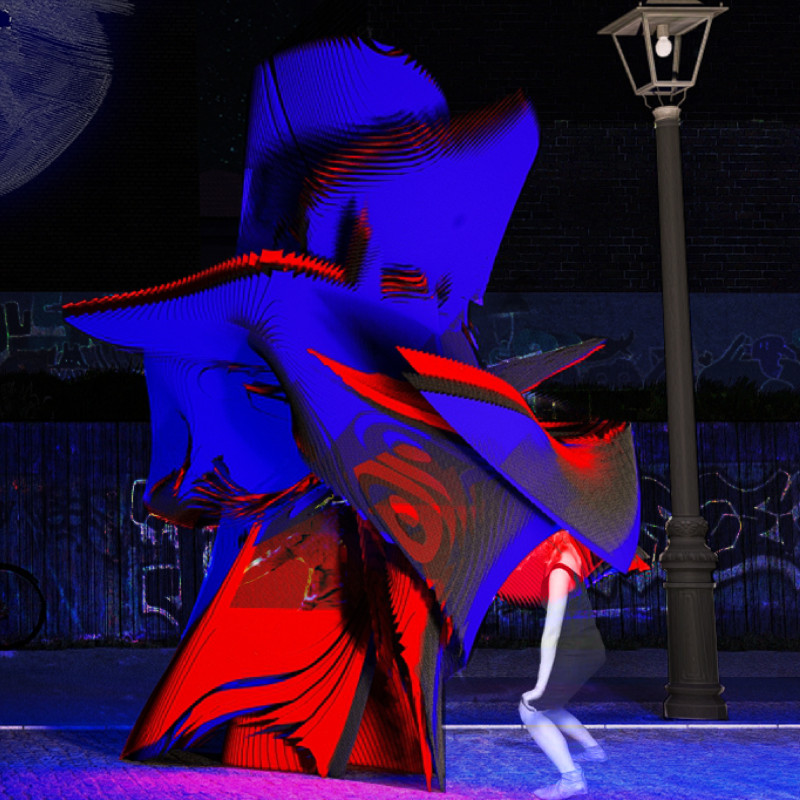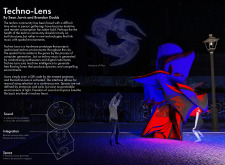5 key facts about this project
The Techno-Lens project offers an innovative response to the challenges faced by the techno community in urban settings. Located in Berlin, the design serves as a hardware prototype that projects audiovisual experiences throughout the city. By moving away from traditional structures, Techno-Lens combines technology with spatial environments, allowing people to interact with music in engaging and new ways.
Conceptual Framework
Techno-Lens is based on the characteristics of techno music, known for its experimental and digital nature. The project uses machine intelligence to create flowing, computer-generated forms that respond to sound. This approach encourages interaction, forming a connection between music and space that enhances the overall experience.
User Interaction
Users engage with Techno-Lens through a straightforward process. By scanning a QR code near the projectors, individuals activate the system and choose their musical experience, whether selecting specific songs or opting for a continuous mix. This design element ensures that users are actively involved in shaping their surroundings, which adds depth to their interaction with the space.
Spatial Characteristics
The design redefines how space is perceived by eliminating conventional entrances and exits. Instead, Techno-Lens creates open environments filled with light and sound, allowing for natural movement and interaction. This fluid approach aims to refresh Berlin’s techno identity, creating a space that adapts to the rhythms of its users and encourages a communal experience.
Technical Components
Key technical elements enhance the immersive nature of Techno-Lens. A waterproof disc houses a subwoofer and multiple tweeters, providing strong audio performance that aligns with the overall concept. Reaction sensors transmit audio frequencies to the system, keeping the visuals synchronized with sound. A small processor generates projection-mapped forms, which add another layer of engagement to the environment.
The design brings together sound and light, turning urban locations into lively spaces that reflect the cultural identity of the techno community. Each element works together to create an inviting atmosphere, where music and space blend to form a unique experience for all who engage with it.



















































